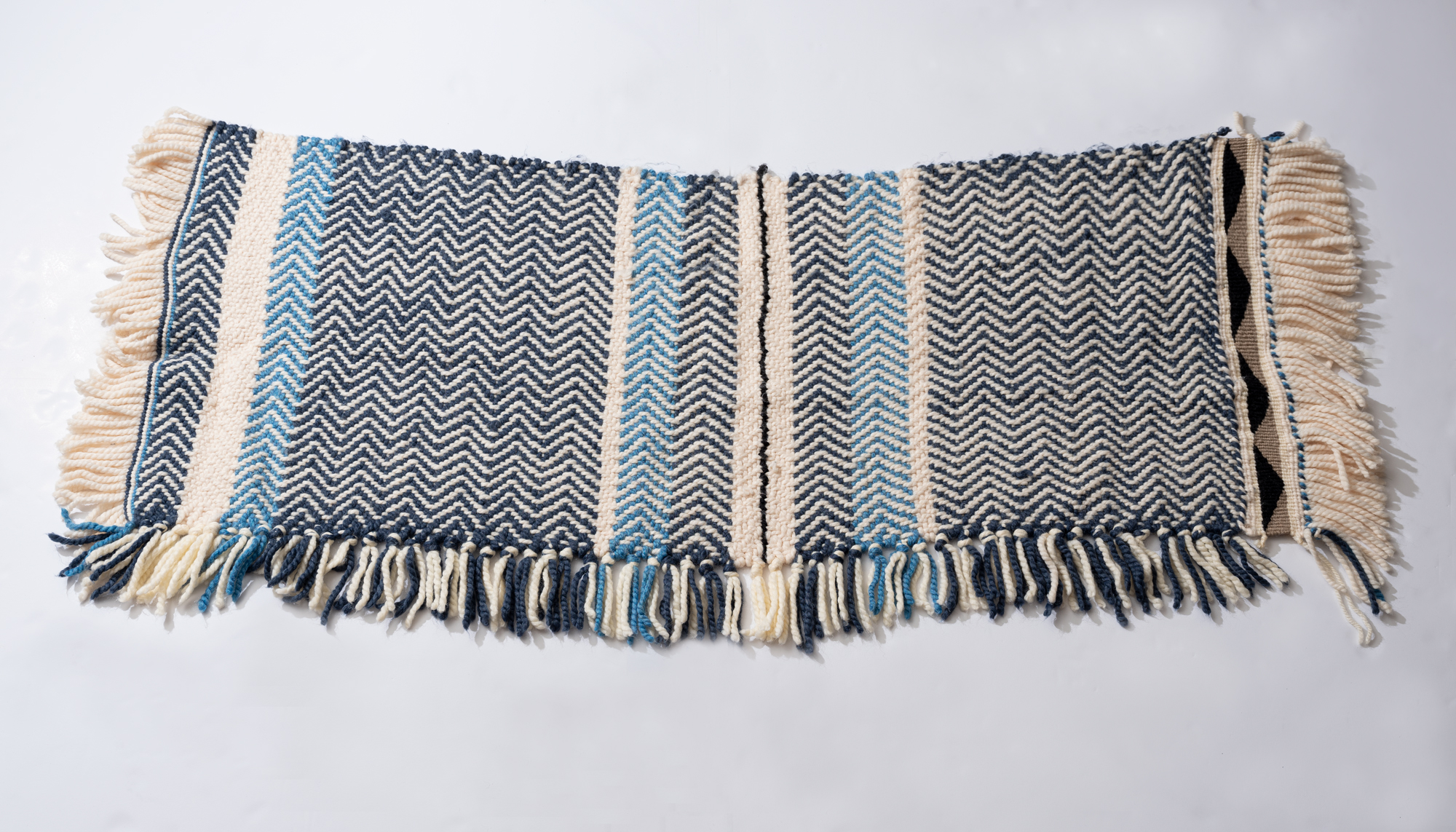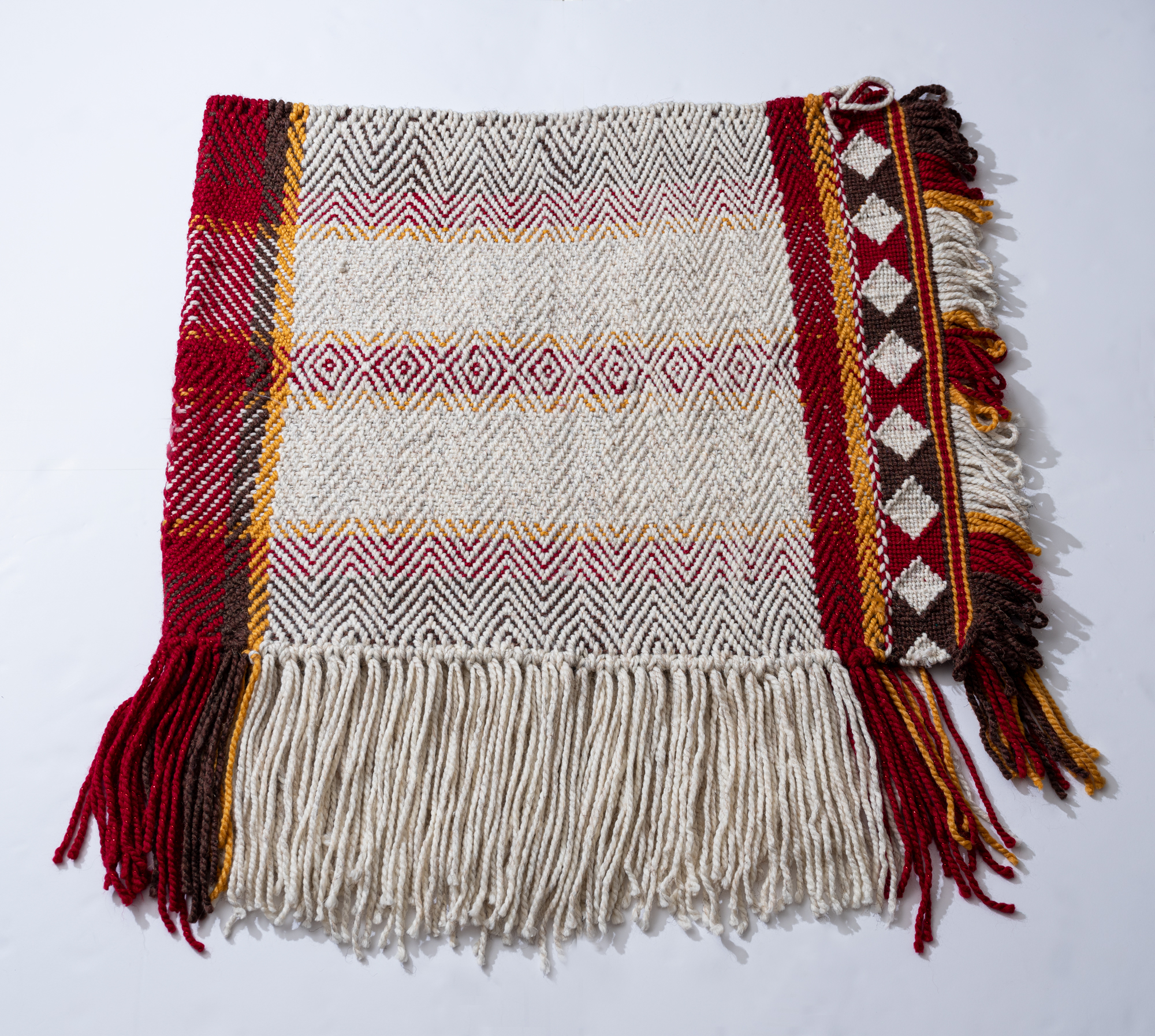Rosemarie (Rose) Williams from The Squamish Nation has been weaving since 2006 in wool. Starting with cedar and moving into wool, presently, she works primarily in wool. She was taught by Chief Janice George and Buddy Joseph in 2006 while working with Squamish Valley Education. Joy Joseph McCullough, the Associate Education Director, brought Janice and Buddy to the Totem Hall to teach the staff. William's first weaving was a tunic that was gifted to her eldest daughter, who wore it to her puberty rights ceremony. Williams primarily weaves for ceremonies and family. Her work has evolved to include pieces that are for traditional ceremonial purposes like naming and memorials.
Excerpts from a conversation between artist Rosemarie Williams and the curator on September 15th, 2022
Tell me about this weaving that you did for your mom.
This is a weaving is one of the first weavings that I did completely on my own it wasn’t in a class, and I was so happy and excited to have that knowledge of weaving. I wanted to create a piece for our mother, and I was speaking with my brother about what my plans were. And he said, how about I buy the wool, we can go to the store together, pick out the wool and buy it. I had my oldest daughter with me at the time, and she said, “mother, I want to learn how to weave,” so it turned out to be a wonderful Mother’s Day gift for our mother. In Coast Salish tradition, we call it esemkwu (ee-sem-kwo). We want to wrap them in a blanket. It's to honor the person that we’re standing up, and we wanted to esemkwu Our mother because she’s our mother, she’s done everything for us, and we thought this was the highest way we could honor her by covering her in this blanket. So, it’s a gift of love from her eldest children and her eldest granddaughter. She wears it with pride; she always wants to be photographed when she wears it. I have a weaving at the cultural center, so I was invited to the opening. We were decked out in our regalia. We both had our shawls on and cedar hats. Everyone was just admiring her shawl. She wore it on canoe journeys, and if there’s an elder’s event in our community or any type of cultural event, she wears it with pride.
Tell me about this weaving that you wove for yourself.
It's funny; as a creator, you never make anything for yourself. I’m always the last person. I’ve always wanted a shall in those colors. But I’ve given them away, or if I’m in a tight crunch, I’ll do a raffle. So, this one I wove for myself. I’ve always wanted the off-white, the red, the brown and a bit of gold. Those are earthy colors, and where I am in my life, I’m learning a lot about how traditional plants, for food, for medicine, for dyeing, and those colors really speak to me for that. As a weaver, I’ve loved twilling more twinning, but now I'm loving twinning, so the edges on there are my way of exploring twinning, doing the different shapes and different colors. I find that with my weaving now, I’m leaning more towards even numbers, twelve months, four seasons. In our cultural work, things are done in even numbers, so that’s what I’m mindful of with my work now. A lot of my work is connected to the land. When I weave for people, I always ask them, “where are you from, where is your family from?” so I know where they're from and what comes from that space.
My ancestral name is Yususult (yo-so-sult) comes from my mother. Her name is Bernice Moody, and her grandfather was Moses Billy, and he gave this name to her, it comes from his mother, her name was Yususult her English name was Marie or Molly, and my mom wanted to see me and my oldest daughter covered with a name. So, she said, let's start finding the work for this. At the time, I approached one of our elder language teachers and I asked her, “can you translate my name, the name that I’m receiving.” She got back to me and said that I cannot translate your name because it's a really old name. It comes from a long time ago. I cannot translate it word for word, but what I can say it has to do with weaving. It roughly translates to a careful weaving, and I can also say it has to do with mountain goats. I feel like things happen in your life for a reason, and one of those reasons to learn wool weaving was for me receiving this name. I am really honored to carry that name and to do something I feel my great-great- grandmother did as well.




